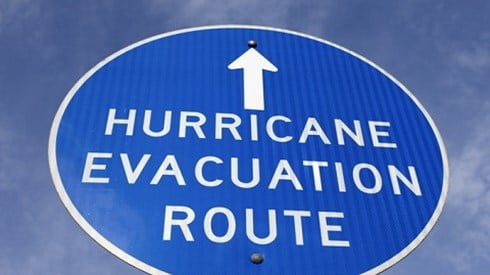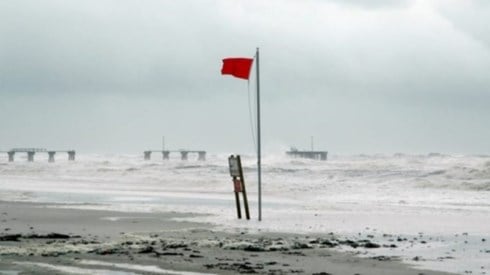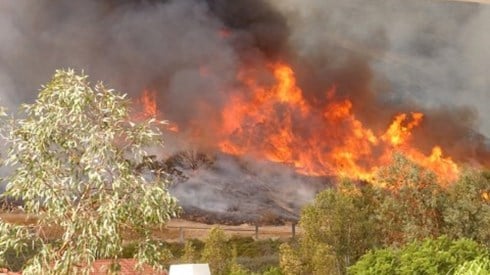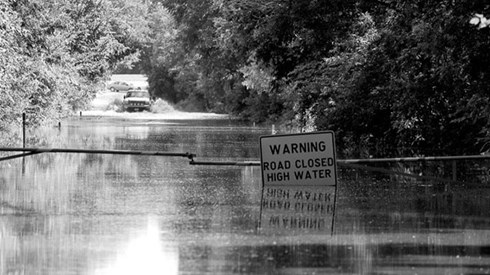Growing Flood Peril Underscores the Size of the Global Protection Gap

April 06, 2022

Natural catastrophes were responsible for $270 billion in economic losses and $111 billion in insured losses in 2021, according to the Swiss Re Institute, with floods responsible for 31 percent of economic losses.
According to a new Swiss Re sigma report, those economic losses caused by floods were just 2 percent less than the amount of losses caused by tropical cyclones. Yet, while floods caused $82 billion in economic losses, insured losses from floods were approximately $20 billion, Swiss Re reported, highlighting a significant protection gap.
The sigma report, titled Natural Catastrophes in 2021: The Flood Gates Are Open, No. 1/2022, March 30, 2022, notes that 2021's catastrophe losses were the fourth highest in sigma records. The year's losses also continued a long-term trend of insured losses increasing by 5 percent to 7 percent annually around the world.
The year's natural catastrophes included an earthquake in Haiti that resulted in more than 2,000 deaths, more than 50 severe flood events worldwide, tropical cyclones, episodes of extreme cold and heat, and severe convective storms, the sigma report said.
Hurricane Ida was the costliest single disaster during the year, Swiss Re said, though secondary perils once again were responsible for the majority of insured natural catastrophe losses in 2021.
"While we do not see a new norm of higher loss growth rates, regular occurrence of multi-billion insured loss outcomes from secondary peril events is new," the sigma report said. "In 2021, two separate secondary perils events—winter storm Uri in the US and devastating floods in central-western Europe in July—each caused losses in excess of USD 10 billion. Traditionally secondary perils have been less well monitored than primary. Recent efforts to change this should be further progressed."
For example, the costliest natural disaster on record in the region was July's European floods, according to Swiss Re. But, despite record insured losses from floods, the protection gap remains large, Swiss Re said.
"Floods affect nearly a third of the world population, more than any other peril. In 2021 alone, we witnessed more than 50 severe flood events across the world," Martin Bertogg, head of catastrophe perils at Swiss Re, said in a statement. "Given the scale of devastation, flood risk deserves the same attention and risk assessment rigor as primary perils such as hurricanes."
Swiss Re suggested that flood losses will continue to increase as a result of climate change and increased urbanization. Though climate change will produce more frequent and more extreme weather events, increasing populations, rapid urban development, and the accumulation of economic wealth in disaster-prone areas are contributing to the growth in catastrophe losses.
While 2021 saw intense natural catastrophe activity—including floods in Europe, China, the United States, and elsewhere—2022 seems to be on course to follow suit, with major flooding in eastern Australia during this year's first quarter causing major damage and substantial insured losses, Swiss Re said.
"Growing losses from floods are becoming ever more apparent," Jérôme Jean Haegeli, Swiss Re's group chief economist, said in the statement. "Last year we had another wake-up call. There is a growing urgency for action to increase the resilience of societies worldwide. Together with the public sector, re/insurers are well equipped to steer development away from high-risk areas and invest in protective measures such as green infrastructure. This keeps assets insurable while also improving the growth outlook."
Swiss Re said that its sigma records show that floods are the most frequent natural catastrophe, with about three times as many major floods as tropical cyclones over the past decade. Floods are also responsible for more than one-third of all fatalities caused by natural catastrophes, Swiss Re said. Meanwhile, floods were responsible for 23 percent of economic losses due to natural catastrophes, the second-highest percentage after tropical cyclones.
Still, according to the Swiss Re Institute, over the last 10 years only 5 percent of severe flood losses were insured in emerging markets and 34 percent in advanced economies, underscoring the extent of the protection gap.
The largest flood protection gap is in Asia, Swiss Re said, where only 7 percent of economic losses are covered by insurance. By comparison, 34 percent of flood losses in Europe are insured.
The Swiss Re sigma report noted that flood risk is a complex exposure to monitor. In addition to the contributions of economic growth and urbanization to exposures, other factors such as aging flood control infrastructure or a lack of those systems, "soil sealing" in urban areas, increased rainfall from tropical cyclones, and clustering of catastrophe events have contributed to losses.
Climate change also must be considered in assessing both current and future flood risks, according to the report. "For instance, in scenario analysis, we project for 2050 more pronounced increases in UK flood-related losses for high return periods and assuming no adaptation interventions," the report said.
In the report, Swiss Re said it believes that flood risk is and will remain insurable but requires efforts to deepen understanding of the peril through increased use of technology and models.
"By optimizing the large range of granular data sets available today, and continually updating these as conditions change, existing industry models can be adapted to integrate the multiple factors that shape present-day and future flood risk in different parts of the world," the report said.
April 06, 2022





